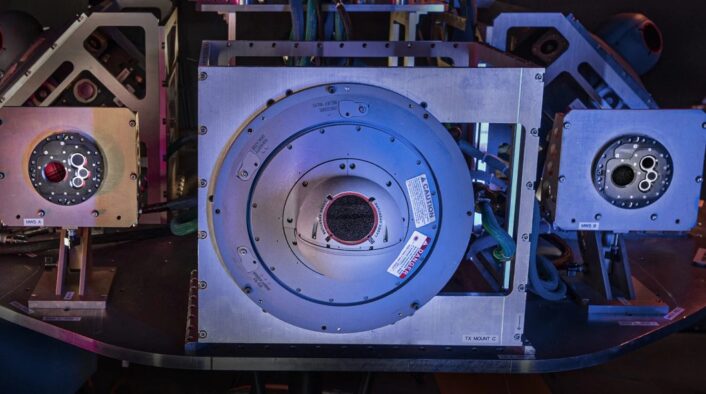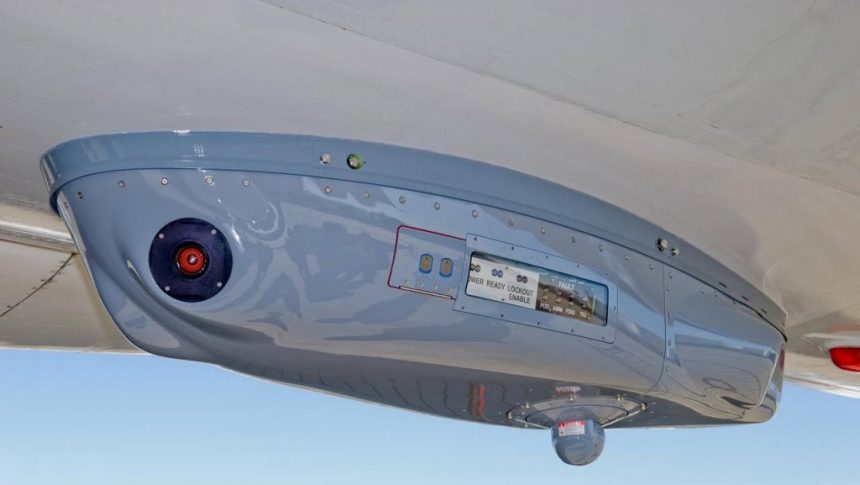Northrop Grumman received another order for the installation of new AAQ-24(V) LAIRCM systems, as well the upgrade of existing ones.
The U.S. Air Force is continuing to improve the self-protection capabilities of its support aircraft, adding an order for additional AN/AAQ-24(V) Large Aircraft Infrared Countermeasure (LAIRCM) systems to an existing indefinite delivery, indefinite quantity contract awarded to Northrop Grumman in 2019. The contract includes LAIRCM upgrades, modifications and installations on a wide range of U.S. fixed wing and rotary wing aircraft.
“With its modular, scalable architecture, LAIRCM can adapt to numerous airframes and add technologies that enhance protection capabilities,” said Bob Gough, vice president, navigation, targeting and survivability, Northrop Grumman. “This proven approach has enabled us to provide the U.S. Air Force and thousands of aircrews with unmatched protection and aircraft survivability equipment that helps them stay safe against emerging threats.”

The LAIRCM is a Directional Infrared Counter Measures (DIRCM) system that is designed to defeat a wide range of ground-fired infrared-guided missiles. The system jams the infrared missile seekers through the sensor aperture, causing the missile to miss the intended target. LAIRCM automatically detects a missile launch, determines if it is a threat, and activates a high-intensity, laser-based countermeasure system to track and defeat the missile.
LAIRCM is the only DIRCM system that has seen major production and has been installed on more than 1,500 aircraft of more than 80 different platform types worldwide. According to the available info, each LAIRCM system consists of two or three Guardian Laser Transmitter Assemblies (GLTA)/Small Laser Transmitter Assemblies (SLTA), six Ultra-Violet or Infra-Red Missile Warning System, LAIRCM System Processor Replacement, Control Indicator Unit and associated electronics.
There are numerous LAIRCM configurations installed on a variety of aircraft, all including a processor and a control indicator unit. Configurations can be differentiated by the type of missile warning sensors and laser transmitter assemblies, as there are configurations which include SLTAs and UV sensors, GLTAs and UV sensors, and GLTAs and IR sensors. The Air Force is planning to upgrade all systems to the GLTA/IR configuration, which is smaller, lighter and the most up to date.
LAIRCM is currently installed on a wide range of aircraft, including the C-17, C-5, C-130J, AC/HC/MC-130J, CV-22, KC-46 and platforms operated by international customers, significantly improving their defensive capability against the proliferating IR man-portable air defense systems (MANPADS) missile threats. A podded variant has also been created for the KC-135 tanker and operational since 2017.
The KC-135s were never equipped with built-in missile defense systems because traditionally they operated out of range of high-threat areas. The pod, developed from the LAIRCM Gen 3 system equipped with the GLTA, was designed to remove this limitation and allow the Stratotanker to safely operate near hot spots around the globe while aircrews focus on their critical refueling, aeromedical evacuation and cargo missions.
LAIRCM is also in service with the U.S. Navy in a specific variant, the DoN LAIRCM (Department of the Navy’s LAIRCM). The system, part of the Advanced Threat Warning (ATW) upgrade, has a slightly different configuration to better adapt to the Navy’s requirements, but it remains highly similar to the Air Force’s variant.
After extensive initial testing on the CH-53, the Navy is integrating the DoN LAIRCM on the MV-22, CH-53K, P-8, KC-130J fleets. Before the selection of the Common Infrared Countermeasures (CIRCM) system, the DoN LAIRCM was also installed on a number of U.S. Army’s AH-64E, CH-47F, HH/UH-60M, and UH-60L helicopters in response to a U.S. Special Operations Command (USSOCOM) Joint Urgent Operational Need.









